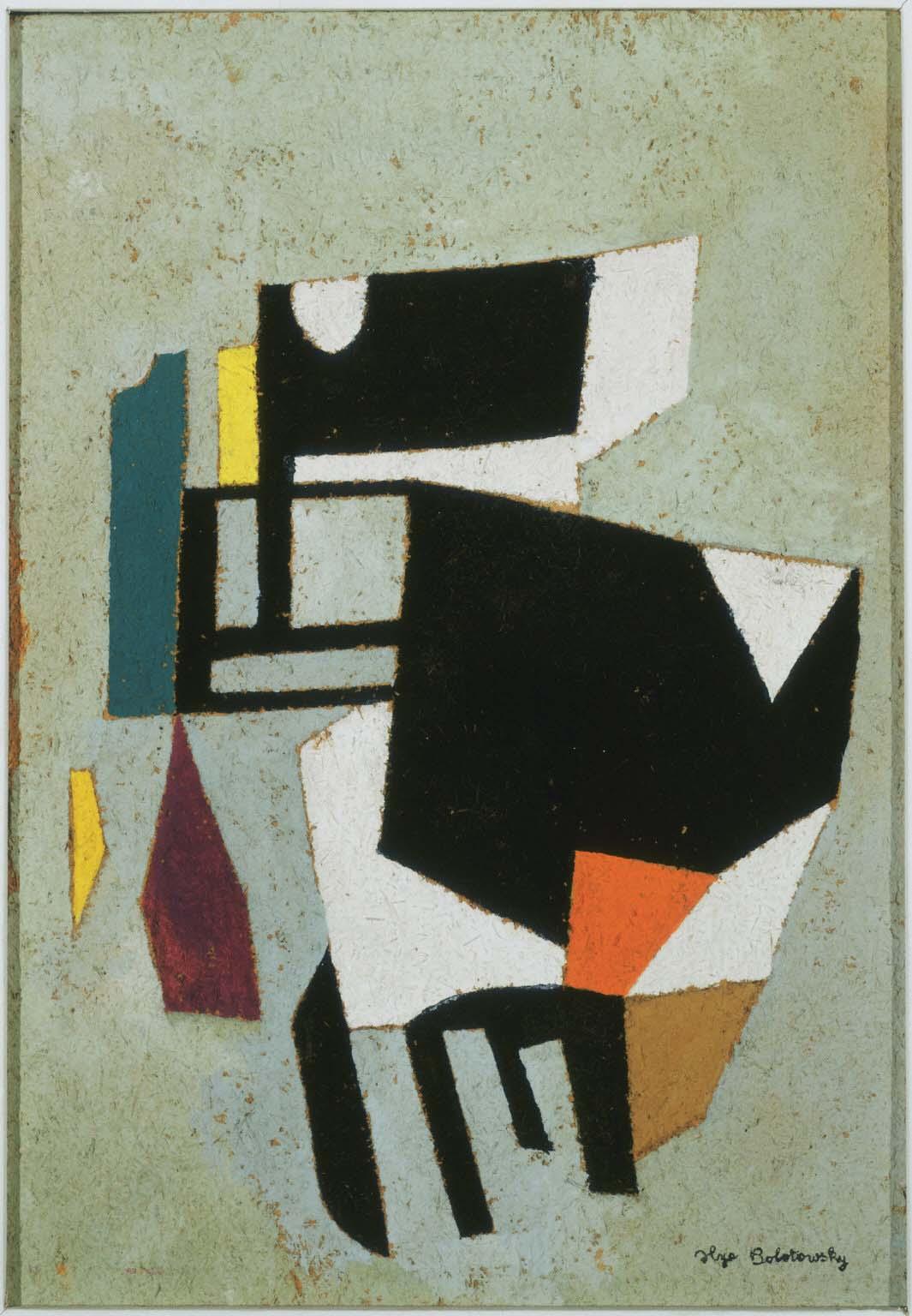Abstraction
Ilya Bolotowsky ( c. 1940 )

Ilya Bolotowsky was a founding member of American Abstract Artists, an organization active in New York during the 1930s and 1940s that took its influence from the abstract European masters of the early 20th Century, including Picasso, Miró, Leger, and Malevich. Their goal was to create an American art based on pure form and color, in opposition of the more realistic, representative art being produced. While these artists shared the same objective, their great diversity in personality resulted in a variety of methods and techniques.
In Abstraction, Malevich’s and Miró’s influence prevails in the configuration of interrelated, asymmetrical shapes embedded in an expanse of matte light green color. Slight depth is implied by the receding blacks and advancing whites; however, they are held in check by the other colors, producing an overall flatness. Shapes of yellow, purple, brown, and orange highlight and complement the skeletal framework. The surface of the painting is emphasized by the rough texture of the particle board visible through the paint.
Duncan Phillips acquired work by members of American Abstract Artists sparingly, purchasing examples by Bolotowsky, Gallatin, and Morris only for a brief time during the early 1940s. The collector’s affiliation with the Works Progress Administration and his acquaintance with Gallatin probably exposed him to this avant-garde group, and his willingness to support American art in all its manifestations may have led him to include their paintings among works by “younger contemporary artists.” Bolotowsky’s small Abstraction, in particular, was to hold a temporarily tenuous position in the collection. Generally such works did not appeal to Phillips, who preferred more expressiveness, spontaneity, and imagination in painting. Its reincorporation into the collection in 1964 indicated that he had come to terms with the purely formal aesthetic of the American Abstract Artists.